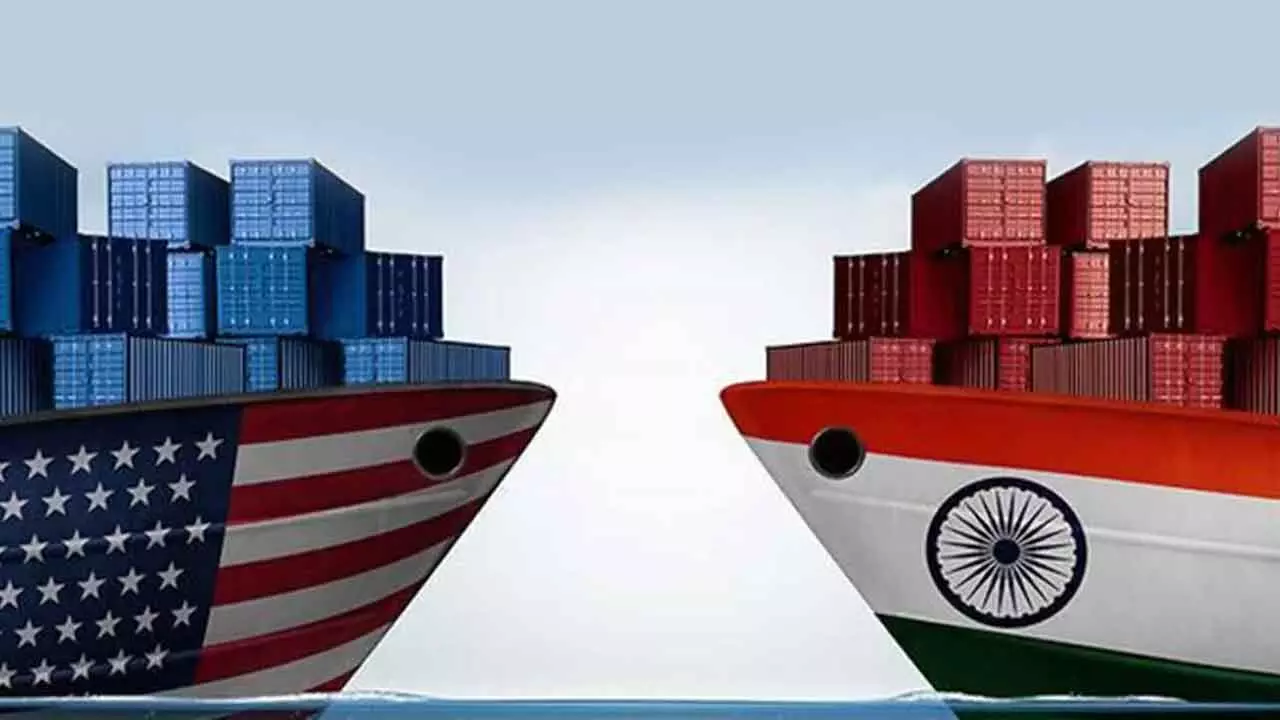Trade Tensions Mount: India and US Lock Horns Over Tariffs as Deadline Looms
As a critical July 9th deadline approaches, India and the United States remain at an impasse over a crucial trade deal. New Delhi pushes back against US auto tariffs with retaliatory measures, while key sticking points like steel imports and agricultural access continue to fuel an uncertain future for bilateral trade.
Trade Tensions Mount: India and US Lock Horns Over Tariffs as Deadline Looms

The clock is ticking for a pivotal India-US trade agreement, with less than a week remaining until US President Donald Trump's July 9th deadline. Despite assurances from both nations' leaders for a swift resolution, negotiators are struggling to bridge significant divides, particularly as India adopts an increasingly firm stance on tariffs.
The elusive trade deal faces formidable hurdles, chief among them New Delhi's recent proposal to levy retaliatory duties against US automobile parts, a move directly responding to America's safeguard tariffs. This escalation highlights the deep-seated disagreements that threaten to derail the highly anticipated pact.
Here's a closer look at the five key developments shaping this high-stakes negotiation:
1. Negotiators Return, Talks Continue Amid Key Interests:
Indian trade negotiators returned from Washington on Friday, signaling ongoing discussions, though officials emphasize that the deal is not tied to any specific date. India's primary objectives remain securing sustained access for its labor-intensive exports, such as textiles and footwear, alongside crucial auto component exports. These sectors are vital to India's economy and are at the forefront of its demands.
2. India Prepares for Retaliatory Auto Tariffs Under WTO Framework:
In a significant development, India formally notified the World Trade Organization (WTO) on Friday of its intent to impose retaliatory duties against the United States. This measure comes in response to America's decision to charge tariffs on imported auto parts, which India views as safeguard measures inconsistent with WTO norms. The proposed action underscores India's resolve to protect its domestic industries against what it perceives as unfair trade practices.
3. No Deal Without National Interest, Says Commerce Minister Goyal:
India's Commerce Minister Piyush Goyal has unequivocally hardened New Delhi's position, asserting that no trade agreement will be signed with the Trump administration unless it is "fully finalized, properly concluded, and in national interest." Goyal stressed that India would not succumb to any deadlines, emphasizing that Free Trade Agreements (FTAs) must be mutually beneficial and represent a "win-win agreement" for both parties. His remarks signal a clear priority for India's economic sovereignty over expediency.
4. Steel Tariffs Remain a Contentious Battleground:
Beyond auto parts, the issue of steel tariffs continues to be a major sticking point. While the US has shown reluctance to grant concessions on steel imports to any country, India has vowed to safeguard its domestic steel industry through the imposition of duties. An official highlighted India's focus on areas of competitive advantage, noting that even with tariffs, US production in certain sectors could face challenges, suggesting India's strategic approach to the trade imbalance.
5. BRICS Nations Unite Against Perceived Unfair US Tariffs:
Adding another layer of complexity to the global trade landscape, emerging nations of the BRICS bloc (Brazil, Russia, India, China, and South Africa), representing nearly half the world's population and 40% of global economic output, are reportedly uniting against what they term "unfair" US import tariffs. Diplomats from 11 emerging nations are actively drafting a statement condemning the economic uncertainty created by these unilateral measures, signaling a broader international pushback against the Trump administration's trade policies.
As the July 9th deadline looms, the India-US trade negotiations appear to be entering a critical phase. With both nations holding firm on their key demands, the path to a mutually beneficial agreement remains fraught with challenges, leaving the future of bilateral trade relations uncertain

